

Here are some pictures from our September 2007 trip to Italy.
We spent a week in the Umbrian hills. Umbria is a bit north of Rome, straddling the Appenine mountains on the east side of the peninsula, level with Tuscany on the west, and full of charming hill towns and spectacular views.
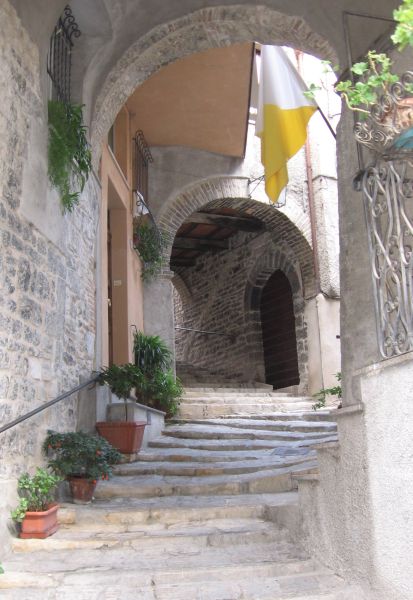

Along with our Maine friends Marian and Robb, we rented a self-catering unit in a converted farmhouse near the small town of Casa Castalda.

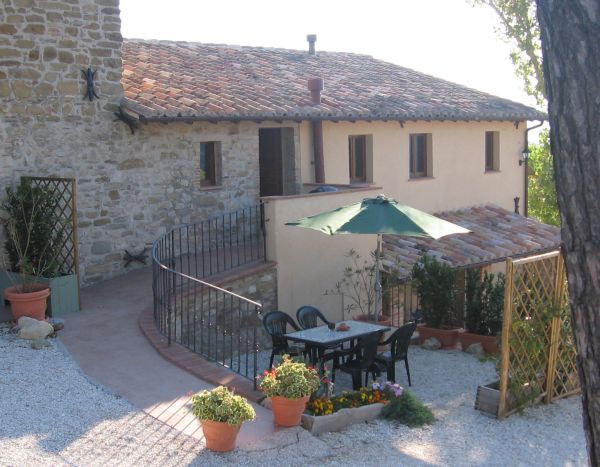

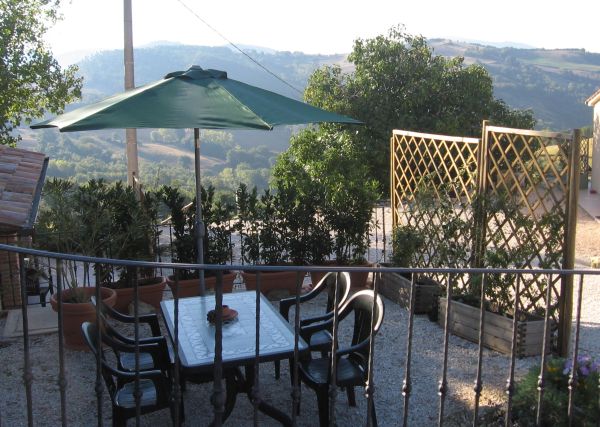
One of our walks was up Mt. Cucco (1566 m.), in a nearby national park.
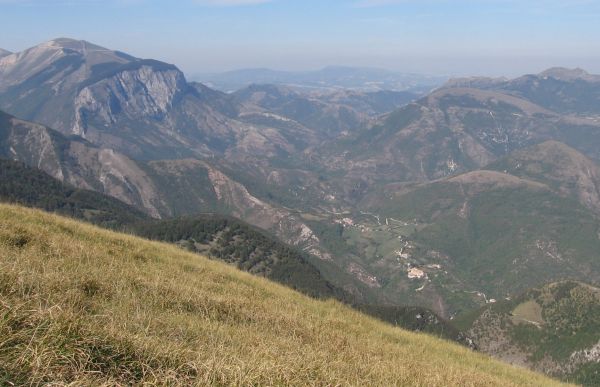
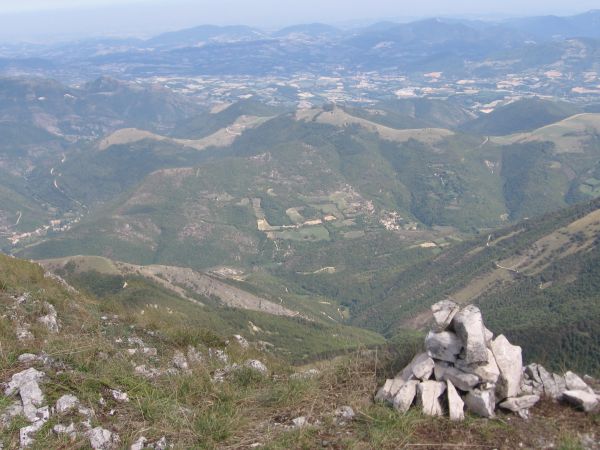

Mt. Cucco is popular with hang-gliders and para-gliders.


Gubbio is a nearby hill town with steep streets and ancient masonry.


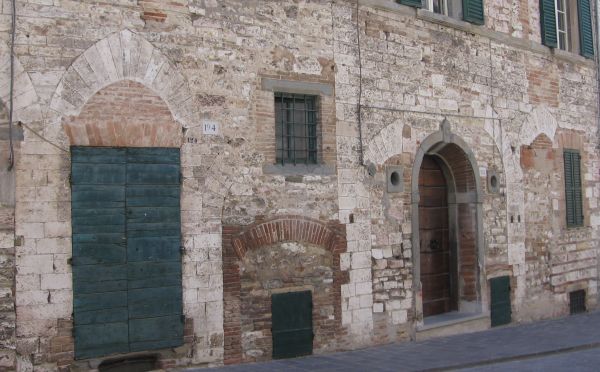
The Roman theatre in Gubbio is well-preserved enough that they still use it now.

When the people of Gubbio were once troubled by a wolf, St. Francis befriended it.
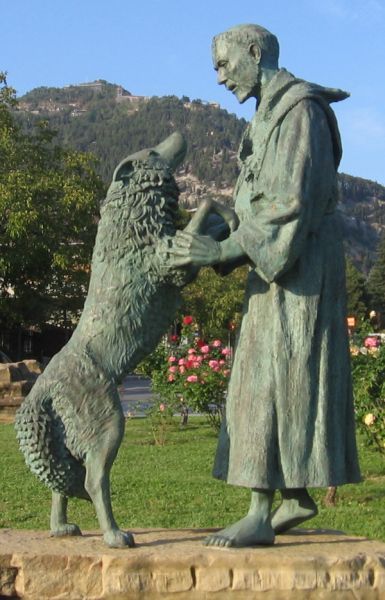
Francis, of course, came from the nearby town of Assisi. There's a medieval fortress above the town, which in turn overlooks the valley below.

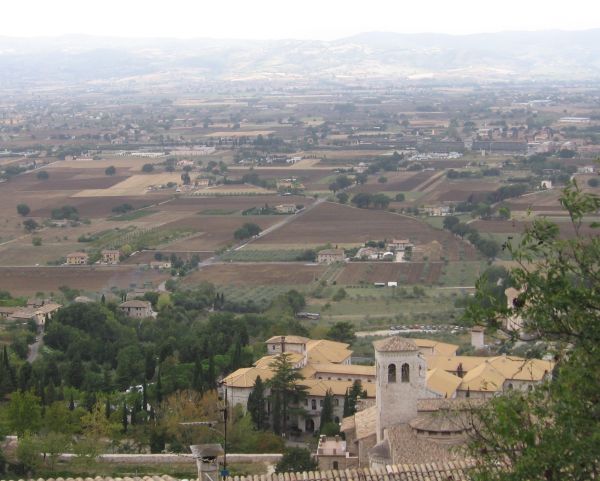
The basilica of St. Francis seems a bit out of scale with the saint's own humility.

Clare was an early follower of Francis who later founded the Poor Clares. Her church ended up needing to have buttresses added after the fact. (The interiors of the churches were also interesting, but photography is not encouraged there.)

The Assisi cathedral features cute animal carvings.
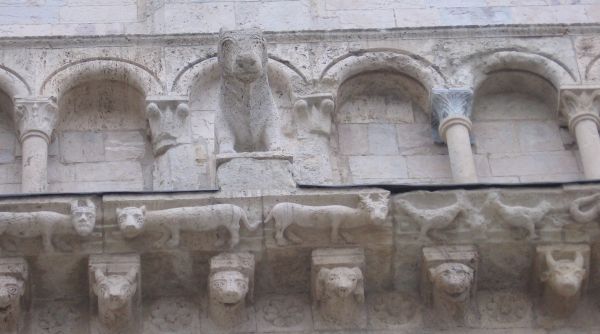
In the hills above Assisi are some caves where Francis and his companions would go for solitude. By open air altars there, pious visitors still leave requests.

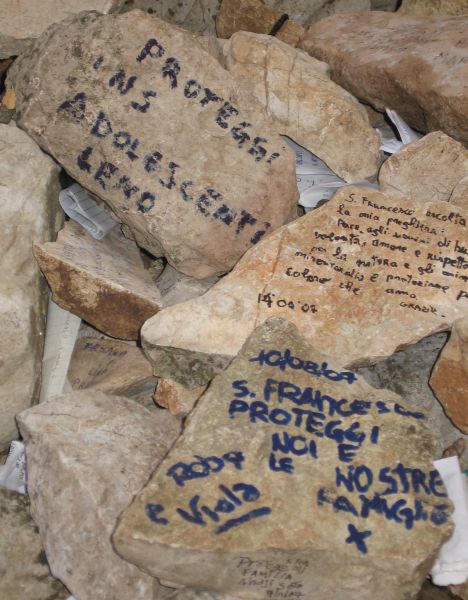
There is a "Path of Peace" hiking trail that traces Francis' route from Assisi to Gubbio. The red and white blazes on the post are the standard trail marks in Italy, and the "T" cross is associated with Francis. The English translation on the sign describing the path could perhaps have used a bit of editing.
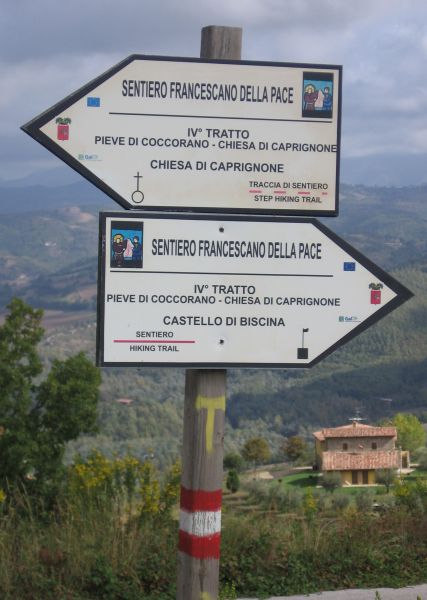
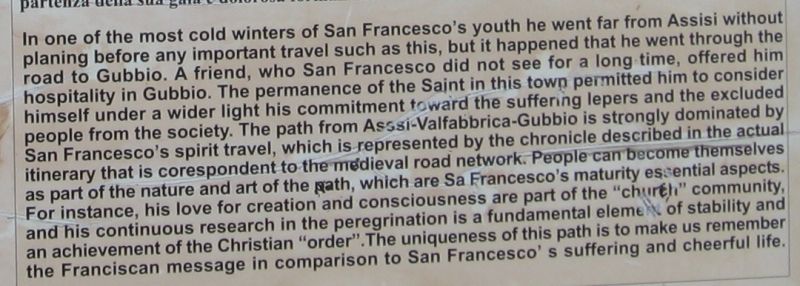
We hiked a portion of the trail that goes through rolling hills.


An olive tree by the trail shows another "T" cross blaze. (While dirt roads in Ireland are "green roads", in Italy, they are "white roads".)

For a few days before and after the week in Umbria, we visited in Rome with Susan, Gail's high school roommate from Westtown, who works for the Food and Agriculture Organization of the United Nations in Rome.

Her fourth-floor apartment, two blocks from the Pantheon, provided a wonderful base for sight-seeing.


In the hallway walls of her apartment building, the builders mounted some of the ancient objects that they found during construction.
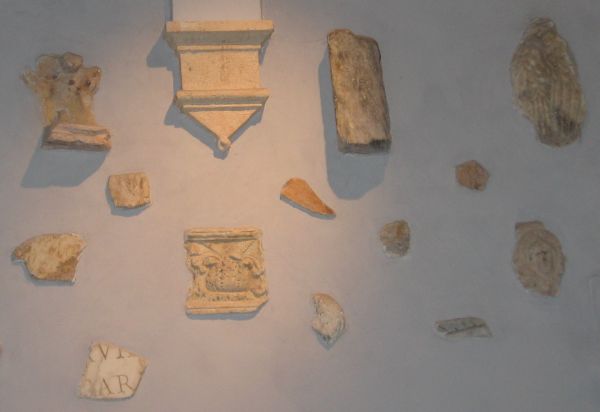
She drove and walked us all around the city, with its amazing fountains and monuments.


Bernini carved this elephant as a suitably exotic base for a looted Egyptian obelisk.

The Colosseum and Forum are imposing, even in their ruined state. (The marble cladding that originally covered the Colosseum now covers St. Peter's.)


Smaller ruins are found all over the city, like these three Roman temples. Those "Roman pine" trees in the background are the type from which pine nuts come.
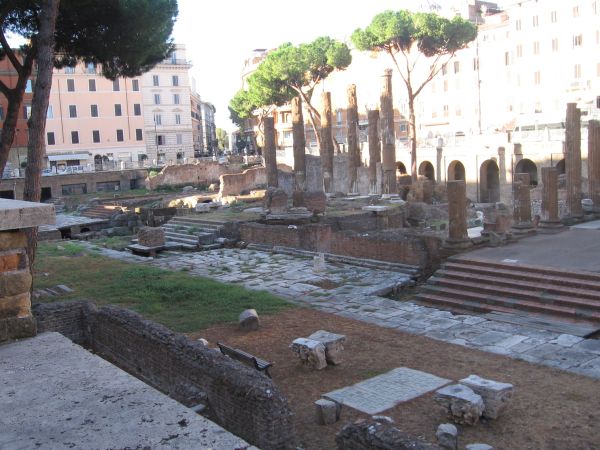
We also walked through the old Jewish ghetto.

We spent a fine day in the Vatican Museums (no photography there, of course), and a day at Pompeii.
Pompeii is famous enough that we'll only include a few pictures here. While the materials and style are different, the general city plan with central squares, public buildings, and large and small houses arranged in rectangular blocks feels quite familiar.
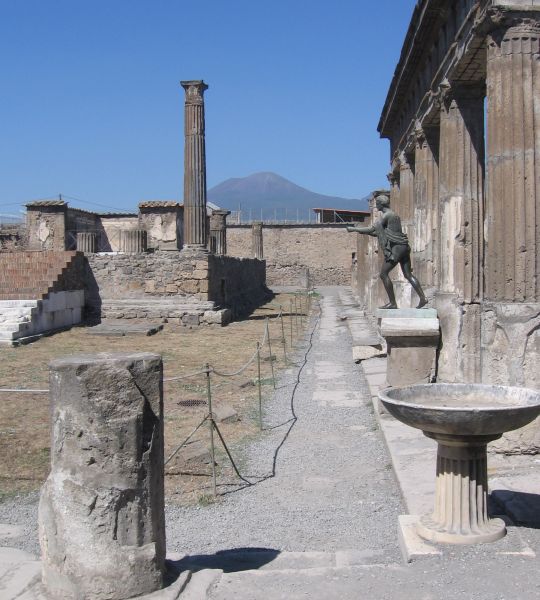

The stadium had expensive seats in front and cheap seats in the back.
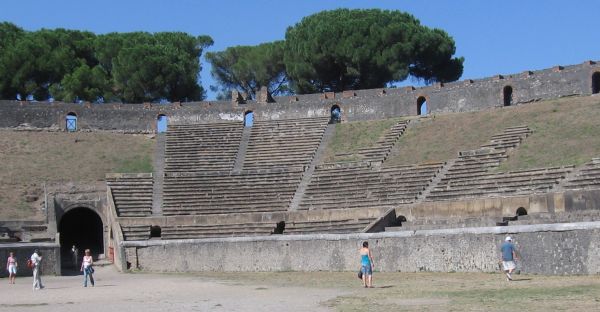
After an aqueduct was built, the rich folks started including pools and fountains in the courtyards of their villas.

Many front halls sported "Beware of Dog" mosaics, and the frescos in the brothel were topically appropriate.
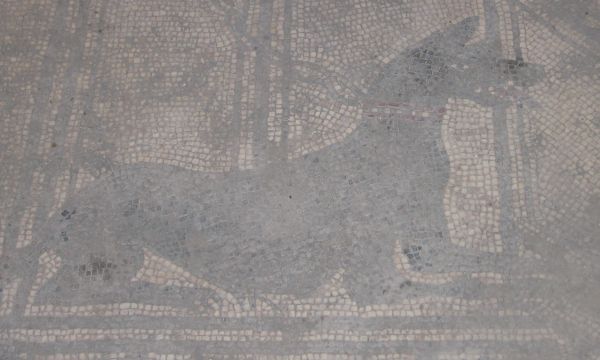

When the ash fell, it formed molds around the bodies of the victims. Plaster casts from the molds show even details of the clothing.
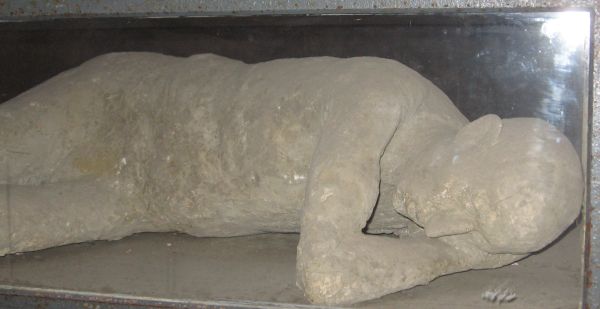

On our last day, Susan took us to an Etruscan necropolis in Cerveteri, an hour northwest of Rome. The Etruscans preceded the Romans in central Italy; some of the early Roman kings (before the Republic) were Etruscan.
The earliest tombs were small trenches, but a style then developed where tombs cut down into the volcanic stone were in turn covered with mounds of cut stone and dirt. (There seem to be clear connections here with the great mounds in Newgrange in Ireland.)



The burial chambers here were carved to look like houses, including architectural details. The most common design had three rooms side by side, each with two stone beds.
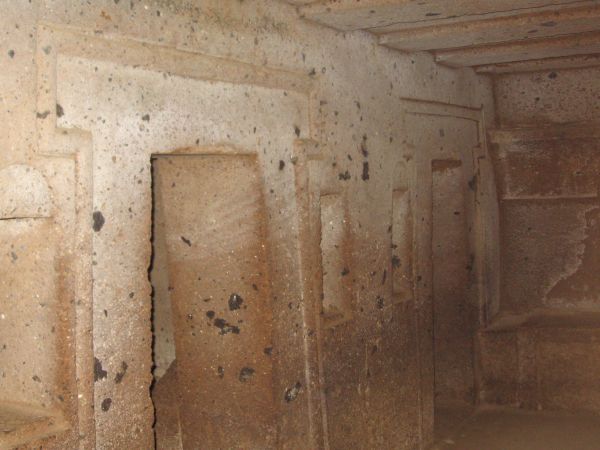
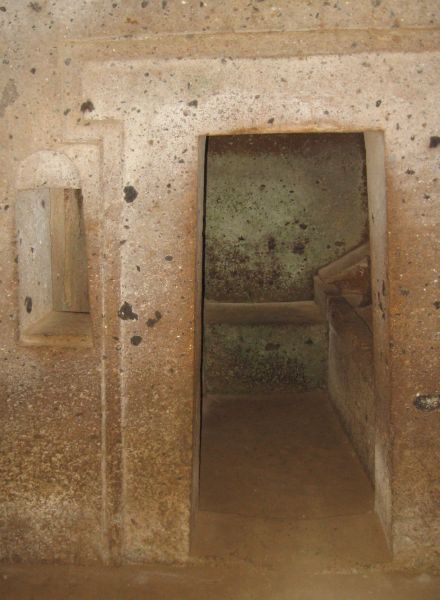
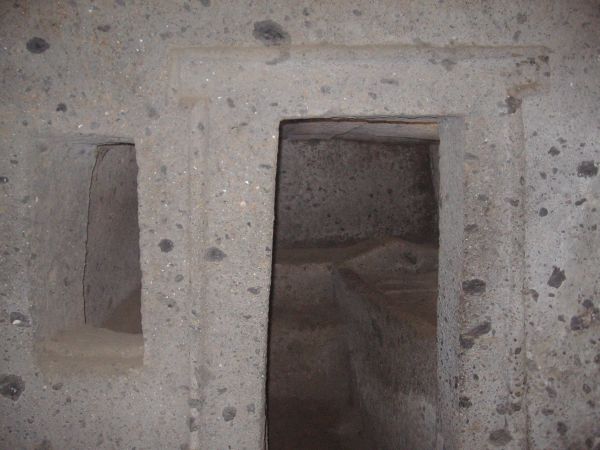
Small houses and phallic symbols marked the occupant's gender.

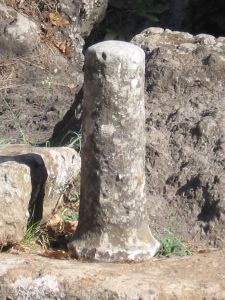
As the necropolis grew, whole streets of more rectangular tombs were laid out. The necropolis eventually covered four times the acreage of the living city.
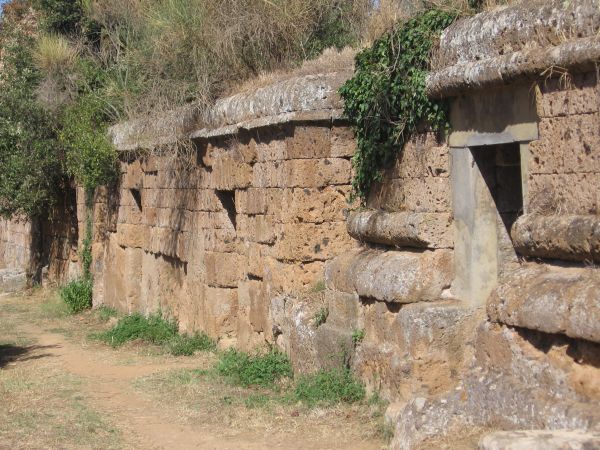
There are lots more pictures, if you're interested, but for now, let's end with a shot of the rainbow that followed the only shower that we encountered in Italy.

Back to ramshaw.info home page
Updated 2007-10-08